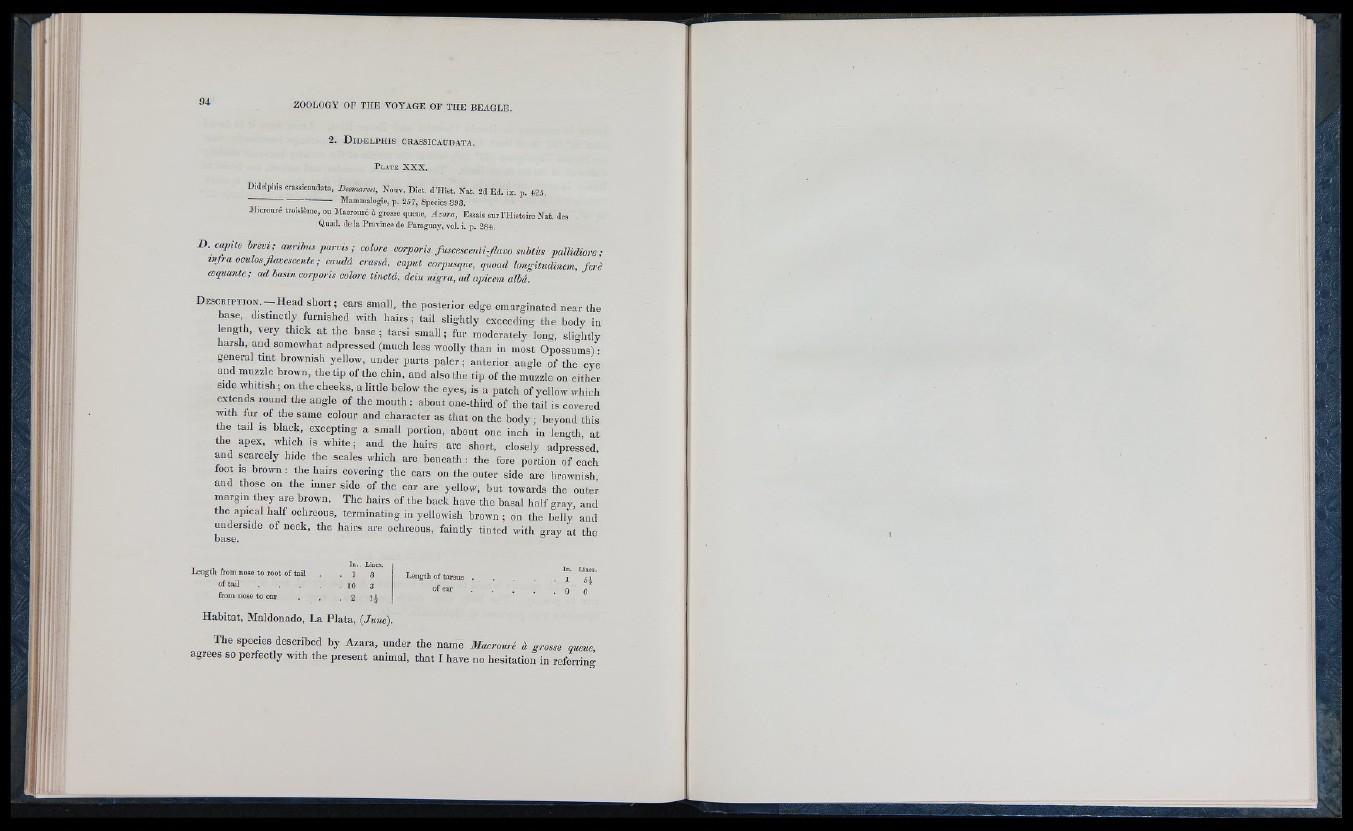
2 . D i d e l p h i s c r a s s ic a u d a t a .
P l a t e X X X .
Didelphis crassieaudata, Desmarest, Nouv, D iet, d ’ilist. N al. 2d Ed. ix. p. 425.
^ ) --------------------Manmialogle, p. 257, Species 393.
Mictoure troisième, ou Macrouré à grosse queue, A za ra , Essais sut IT-Iistoire N at. des
Quad, de la Province de Paraguay, vol. i. p. 284.
D . capite h-evi; auribus parvis ; colore corporis fuscescenti-Jiavo subtùs patlidiore ;
infraocutosflavesceule; caudâ crassâ, caput corpusque, quoad longitudinem, ferè
oequante; ad basin corporis colore tinctâ, dein nigra, ad apicem albâ.
D e s c r i p t i o n . — Head short ; ears small, the posterior edge emarginated near the
base, distinctly furnished with hairs ; tail slightly exceeding the body in
length, very thick at the base; tarsi small; fur moderately long, sligfoly
harsh, and somewhat adpressed (much less woolly than in most Opossums) :
general tint brownish yellow, under parts paler ; anterior angle of the eye
and muzzle brown, the tip of the chin, and also the tip of the muzzle on either
side whitish; on the cheeks, a little below the eyes, is a patch of yellow which
extends round the angle of the mouth: about one-third of the tail is covered
with fur of the same colour and character as that on the body ; beyond this
the tail is black, excepting a small portion, about one inch in length, at
the apex, which is white; and the hairs are short, closely adpreséed,
and scarcely hide the scales which are beneath : the fore portion of each
foot IS brown: the hairs covering the ears on the outer side are brownish,
and those on the inner side of the ear are yellow, but towards the outer
margin they are brown. The hairs of the hack have the basal half gray and
the apical half ochreous, terminating in yellowish brown ; on the belly and
underside of neck, the hairs are ochreous, faintly tinted base. with °gray at the
Length from nose to root of tail
o ftail
from nose to ear
la .. Lises.
1 3
10 3
2 H
Habitat, Maldonado, La Plata, (J?U9ie
Length of tarsus
of ear
In. Lines. 1 5k
0 e
The species described by Azara, under the name Macrourc u grosse queue
agrees so perfectly with the present animal, that I have no hesitation in referring